United Nations Office for Disarmament Affairs
The UN Office for Disarmament Affairs (UNODA) (French: Le Bureau des affaires du désarmement) is an Office of the United Nations Secretariat established in January 1998 as the Department for Disarmament Affairs, part of United Nations Secretary-General Kofi Annan's plan to reform the UN as presented in his report to the General Assembly in July 1997.[2]
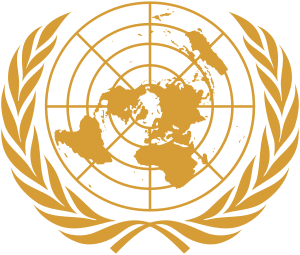 | |
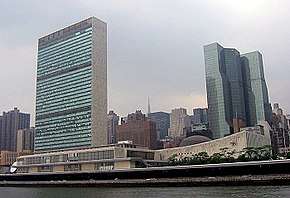 United Nations Headquarters | |
| Abbreviation | UNODA |
|---|---|
| Formation | 1998 |
| Type | Department of the Secretariat |
| Legal status | Active |
Head | High Representative for Disarmament |
Parent organization | United Nations Secretariat |
| Subsidiaries | UNLiREC, UNREC, UNRCPD |
| Website | www |
Its goal is to promote nuclear disarmament and non-proliferation and the strengthening of the disarmament regimes in respect to other weapons of mass destruction, chemical and biological weapons. It also promotes disarmament efforts in the area of conventional weapons, especially landmines and small arms, which are often the weapons of choice in contemporary conflicts.
It is led by an Under-Secretary-General (USG) and High Representative (HR), Izumi Nakamitsu of Japan, who took office on 1 May 2017.
History
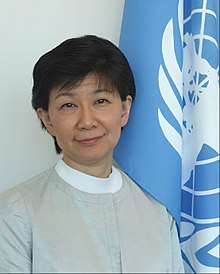
In its landmark resolution 1653 of 1961, “Declaration on the prohibition of the use of nuclear and thermo-nuclear weapons,” the UN General Assembly stated that the use of nuclear weaponry “would exceed even the scope of war and cause indiscriminate suffering and destruction to mankind and civilization and, as such, is contrary to the rules of international law and to the laws of humanity”.[3]
The United Nations Office for Disarmament Affairs had originally been established as a department in 1982 upon the recommendation of the General Assembly's second special session on disarmament (SSOD II).[4] In 1992, it became the Centre for Disarmament Affairs, working under the Department of Political Affairs. At the end of 1997, it reverted to being the Department for Disarmament Affairs. Then, in 2007, Secretary-General Ban Ki-moon announced the appointment of Sérgio de Queiroz Duarte of Brazil as the High Representative for Disarmament Affairs at the Under-Secretary-General (USG) level and the department became the United Nations Office for Disarmament Affairs. Following the retirement of Sérgio Duarte in February 2012, Angela Kane, then USG for Management, was appointed as the new High Representative for Disarmament Affairs. She was the first woman and first non diplomat appointed to this position.
Mission
UNODA provides substantive and organizational support for norm-setting in the area of disarmament through the work of the UN General Assembly and its First Committee, the Disarmament Commission, the Conference on Disarmament and other bodies. It fosters preventive disarmament measures, such as dialogue, transparency and confidence-building on military matters, and encourages regional disarmament efforts. The latter includes the UN Register of Conventional Arms and regional forums. It also provides information on the United Nations disarmament efforts.
UNODA supports the development and implementation of practical disarmament measures after a conflict, such as disarming and demobilizing former combatants and helping them to reintegrate in civil society.
Structure
The United Nations Office for Disarmament Affairs comprises five branches: Conference on Disarmament Secretariat and Conference Support Branch (Geneva), Weapons of Mass Destruction Branch (WMD), Conventional Arms (including Practical Disarmament) Branch (CAB), the Information and Outreach Branch (IOB) and, Regional Disarmament Branch (RDB). RDB further manages three regional centers.
Branches and centers are organized as follows:
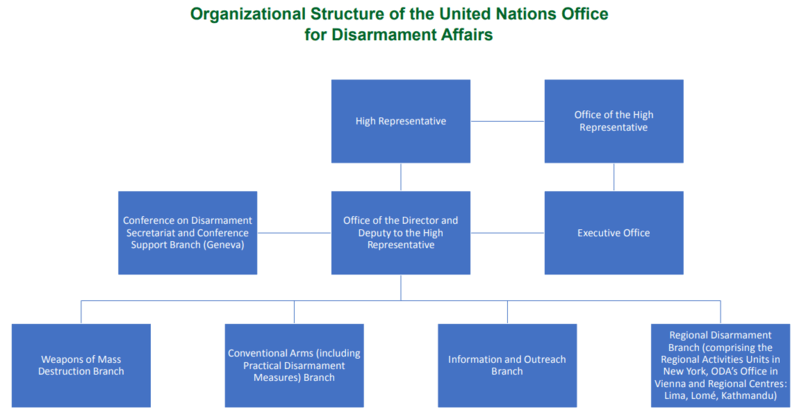
Activities
Conference on Disarmament Secretariat and Conference Support Branch
The Conference on Disarmament Secretariat and Conference Support Branch, based in Geneva, provides organizational and substantive servicing to the Conference on Disarmament (CD), the single multilateral disarmament negotiating forum of the international community.
Weapons of Mass Destruction Branch
The WMD Branch provides substantive support in the area of the disarmament of weapons of mass destruction (nuclear, chemical and biological weapons). It supports and participates in multilateral efforts to strengthen the non-proliferation of WMD and in this connection cooperates with the relevant intergovernmental organizations and specialized agencies of the United Nations system, in particular the IAEA, the OPCW and the CTBTO PrepCom.
Conventional Arms (including Practical Disarmament Measures) Branch
The CAB focuses its efforts in the conventional field (all weapons not considered WMDs, including small arms and light weapons) of promoting transparency and confidence-building, curbing the flow of small arms in regions of tension, and developing measures of practical disarmament. It is responsible for substantive conference support on the UN Programme of Action on small arms, the Arms Trade Treaty process, and the UN transparency registers. CAB chairs the UN-internal coordination mechanism on small arms, CASA.
Information and Outreach Branch
The IO Branch organizes a wide variety of special events and programmes in the field of disarmament, produces ODA publications such as the Disarmament Yearbook and occasional papers, and maintains the databases for specialized areas such as Register of Conventional Arms, Status of Treaties and Article 7 - Mine-Ban Convention.
Regional Disarmament Branch
The Regional Disarmament Branch (RDB) provides substantive support, including advisory services, to Member States, regional and subregional organizations on disarmament measures and related security matters.
RDB oversees and coordinates the activities of the three regional centres:
- - UN Regional Centre for Peace and Disarmament in Africa (UNREC)
- - UN Regional Centre for Peace and Disarmament in Asia and the Pacific (UNRCPD)
- - UN Regional Centre for Peace, Disarmament and Development in Latin America and the Caribbean (UNLIREC)
High Representatives for Disarmament






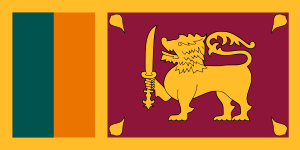
See also
| Wikimedia Commons has media related to United Nations Office for Disarmament Affairs. |
References
- "Secretary-General Appoints Izumi Nakamitsu of Japan High Representative for Disarmament Affairs – Meetings Coverage and Press Releases". United Nations. 29 March 2017.
- Kofi Annan (14 July 1997). "Renewing the United Nations: A Programme for Reform (A/51/950)". United Nations. Retrieved 17 March 2017.
- John Burroughs (2012). "Humanitarian Law or Nuclear Weapons: Choose One" (PDF). Lawyers Committee on Nuclear Policy. Archived from the original (PDF) on 21 August 2014.
- "Report of the Ad Hoc Committee of the Twelfth Special Session". undocs.org. A/S-12/32. Retrieved 17 March 2017.
External links
- UN - Office for Disarmament Affairs
- UN Regional Centre for Peace and Disarmament in Africa
- UN Regional Centre for Peace and Disarmament in Asia and the Pacific
- UN Regional Centre for Peace, Disarmament and Development in Latin America and the Caribbean
- UN Programme of Action Implementation Support System (PoA-ISS)
- Coordinating Action on Small Arms (CASA)
- Disarmament Treaties Detabase
- UNODA Publication